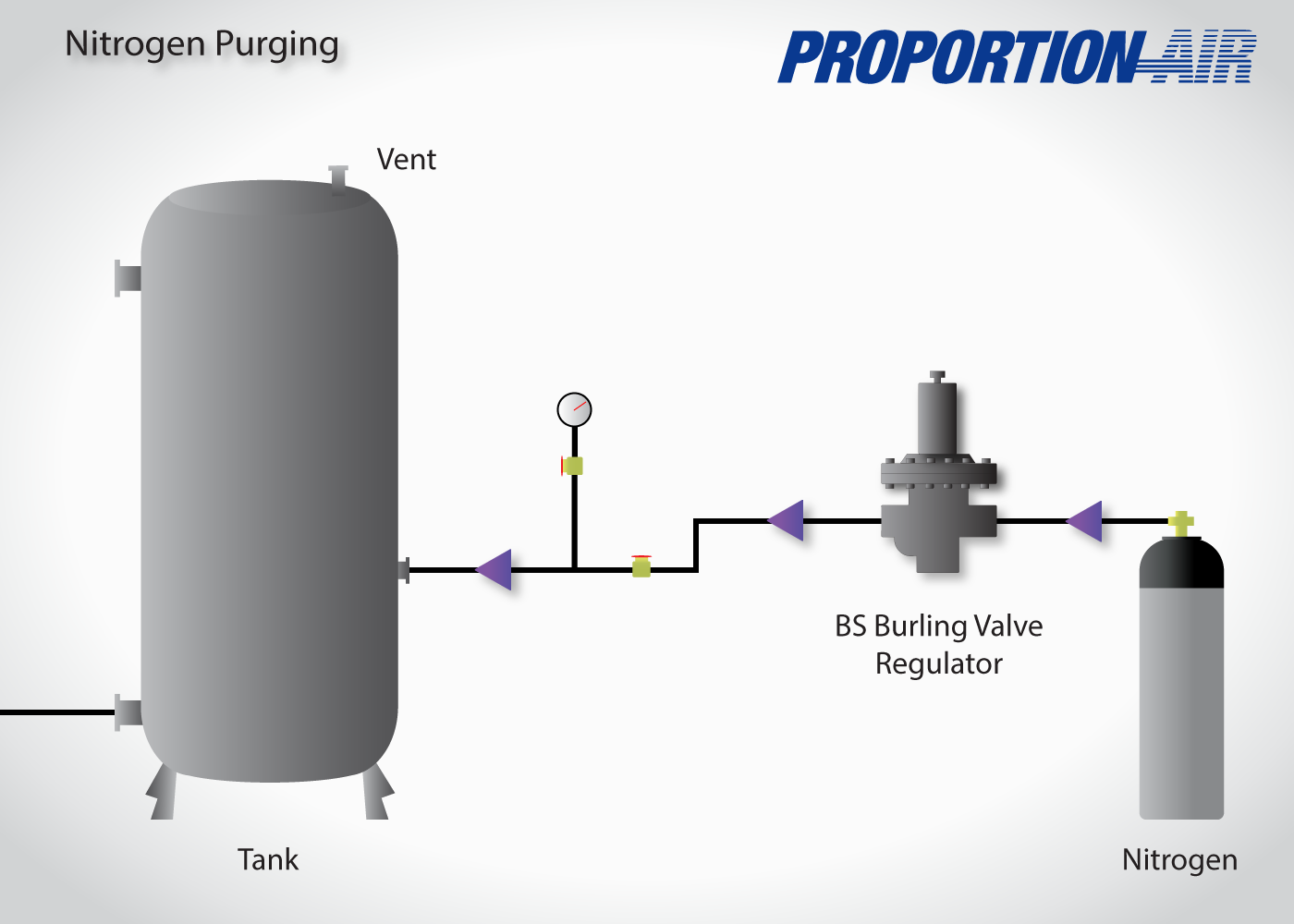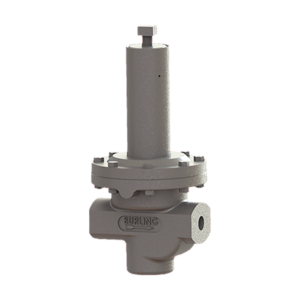
Myriad applications throughout the manufacturing and process control industries use nitrogen. Tank blanketing, industrial nitrogen purging and gas shielding are common examples. Due to its abundance in earth’s atmosphere, nitrogen is the gas of choice because of its availability and low cost.
Nitrogen purging is the method of replacing undesirable or hazardous atmosphere with an inert dry atmosphere. It is one of the most common applications using nitrogen in industrial processes. In our drawing, a BS direct-acting spring-loaded regulator controls the pressure of nitrogen introduced into the tank to purge the undesired gas. Depending on the type of equipment used, different methods may be used to purge with nitrogen:
Displacement Purging
Displacement is the replacement of the undesired gas by a purge gas without intermixing of the two. The volume of nitrogen required corresponds to the volume of the piping involved. In theory, displacement would be a simple, swift means of purging. In practice it is impossible to introduce a gas into a piping system without intermixing with the gas already in the system. Very basic piping runs and geometries use displacement purging.
Dilution Purging
Dilution is the reduction in concentration of an undesired gas by the addition of a purge gas, like N2. The amount of the undesired gas does not change. However, as more nitrogen is added, the concentration of the undesired gas decreases. More complex piping runs and geometries use the dilution method of industrial nitrogen purging.
Continuous Flow Purging
This is continuous introduction of purge gas at one end of a piping system, with continuous removal of the mixture of the two gases from the far end of the piping system. In simple systems, such as tubing runs, the displacement effect is almost absolute, with much of the undesired gas rapidly driven out at the exit end of the tubing.

